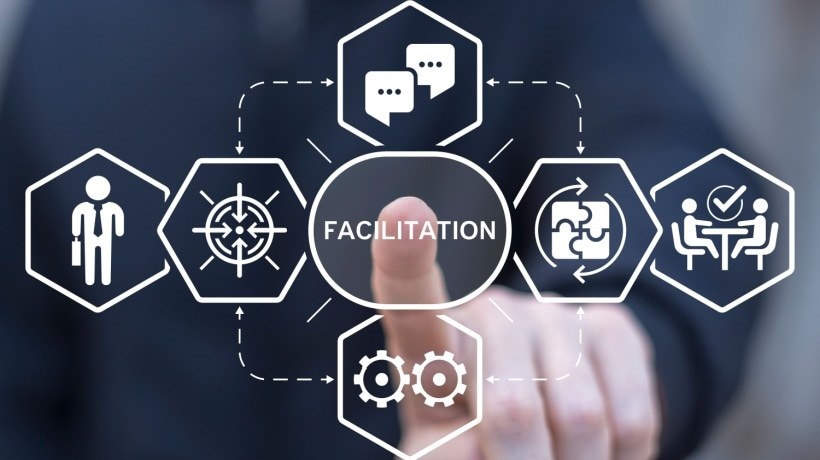The Operational Engine Behind Effective Learning
Recently, I overheard a CLO declare their organization had "solved learning" simply by putting better content in employees' hands. It's a familiar misconception: build the course, distribute the materials, tick the boxes. But this logic overlooks the full picture. In reality, only about 25% of successful learning outcomes are driven by content alone. The rest? It's about:
- Administration.
- Facilitation.
- Analytics.
This is especially true in external training—where you're educating not just employees, but customers, partners, and entire global networks. The pandemic made this truth impossible to ignore.
At my company, we've seen firsthand how learning models had to adapt—not just technologically, but behaviorally. Pre-COVID, many organizations clung to outdated, content-heavy strategies that gave a false sense of success. But as research shows, nearly 70% of organizations accelerated skill-building efforts in response to the pandemic's disruption, and in doing so, discovered they could achieve far more than they thought possible.
What followed was a shift toward advanced facilitation: orchestrating not just the what of training, but the how, when, why, and for whom. Today, we're not just creating courses—we're designing entire learning ecosystems aligned to business outcomes.
What Does Advanced Facilitation Look Like?
Every action in a learning journey is tied to business logic. Enrolling in a course may initiate an approval chain. Certification can impact system access. A job change may trigger new learning requirements.
Advanced facilitation ensures all of these pieces operate in concert. Rather than manually coordinating every step, organizations are now designing systems that unify business rules, user data, and technology into a seamless whole. Facilitation can:
- Streamline invite and registration flows.
- Enforce region-specific privacy and compliance automatically.
- Tailor content access to prior experience or credentials.
- Manage recertification workflows.
- Personalize the learning experience at scale.
Behind the scenes, it connects to everything from HR systems to partner management tools, making sure each learner's experience matches their real-world role. Of course, as more systems connect, complexity increases. The key is to embrace that complexity—without making things more complicated.
Real-World Examples: Where Facilitation Delivers
Today's learning ecosystems must accommodate multiple learner groups, adaptive experiences, and built-in automation—all while staying tightly aligned to business processes. Let's explore how some of our clients have done exactly that:
- The world's second largest reinsurance company
With over 100 contact managers planning global events via spreadsheets, this company's coordination was manual and time-consuming. We helped them automate this through the LMS: contact managers can now send invitations, manage VIP exceptions, and handle localized logistics all within a centralized, rules-driven environment. - A European space exploration agency
This agency needed a secure, compliant process for managing complex application workflows involving thousands of participants across Europe. Our platform allowed them to digitize the process end-to-end, ensuring strict data compliance and real-time evaluation access and eliminating the need for fragile, spreadsheet-based systems. - A global diagnostics firm
This firm shifted from Instructor-Led Training to a global, scalable digital learning model that now serves over 100,000 users. With localized domains, interactive learning portals, and mobile offline access for technicians, they've not only improved learner outcomes—they've unlocked new revenue streams.
These stories highlight one truth: facilitation isn't about flashy features. It's about making training work with the business, not around it.
Automation That Adds Humanity
Some worry that automation removes the human element in learning [1]. In our experience, it does the opposite. By automating repetitive administrative tasks, facilitation enables SMEs and instructors to focus on high-impact interactions—coaching, live feedback, complex problem solving. In fact, when automation is done right, learning becomes more human, not less. Three ways we see this in action:
- Freeing up experts
Automation takes care of reminders, tracking, and report generation, freeing experts to intervene only where their skills truly matter. - Adaptive learning paths
Learner behavior triggers tailored pathways [2]. High performers skip ahead. Those who struggle get routed to extra support or live coaching. - Personalized journeys
Role-based onboarding and continuous feedback loops help deliver the right learning, at the right time, to each learner, without micromanagement.
Where AI Fits In—And Where It Doesn't
AI is everywhere—but its impact depends on good data and realistic expectations. Today's strongest use cases involve [3]:
- Content recommendations.
- Skills gap detection.
- Learning path suggestions
But AI isn't ready to build complex programs for regulated industries or high-stakes skills. Those still require human design. The role of AI? To enhance the learning experience, not replace the experts behind it.
Measuring What Matters: Real Change
Ultimately, the only metric that matters is behavioral change. Course completion means little without on-the-job performance improvement. Advanced facilitation enables post-training evaluation that pulls data from managers, peers, and learners, not just quizzes. Combined with certification tracking, it gives organizations proof that learning drives measurable business results.
Final Thoughts: Why Facilitation Now Defines Strategy
Training content is no longer enough. Learning leaders must now build orchestrated ecosystems that integrate content, people, process, and data. Facilitation is the operational engine behind that system—bringing scale, personalization, and control to every learning initiative. To drive real impact, facilitation must:
- Sync with business operations.
- Automate intelligently.
- Guide learners individually.
- Empower experts to lead.
- Prove value through behavior change.
We've spent years refining content. Now, it's time to refine the system that turns that content into lasting outcomes.
References:
[1] Automation Anxiety And a Right to Freedom from Automated Systems and AI
[2] Adaptive Learning: Personalized Education In The Digital Age
[3] The AI Odyssey of Eurekos: Crafting the Future of Learning










